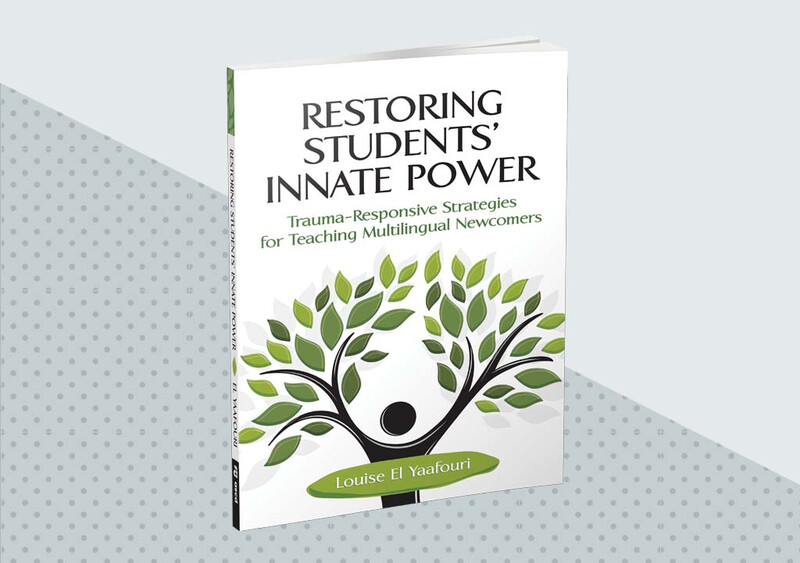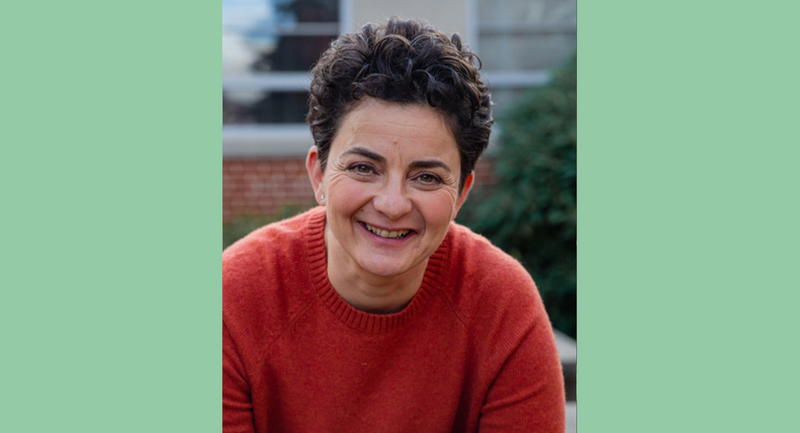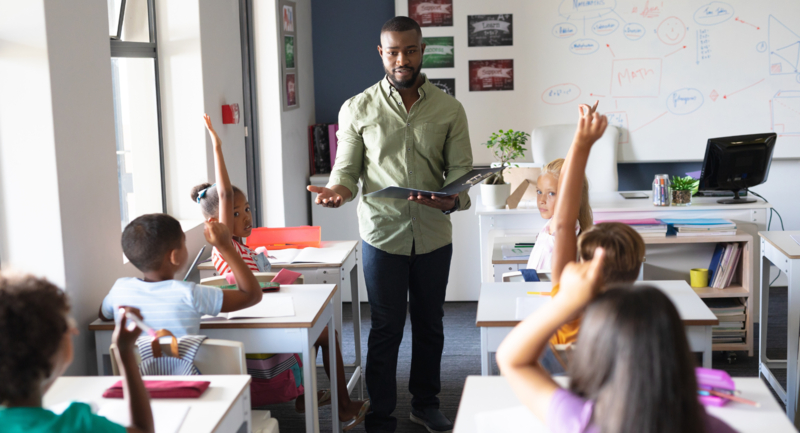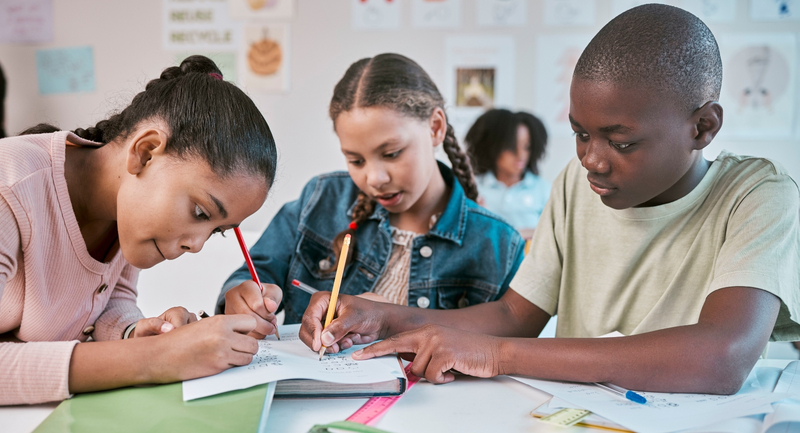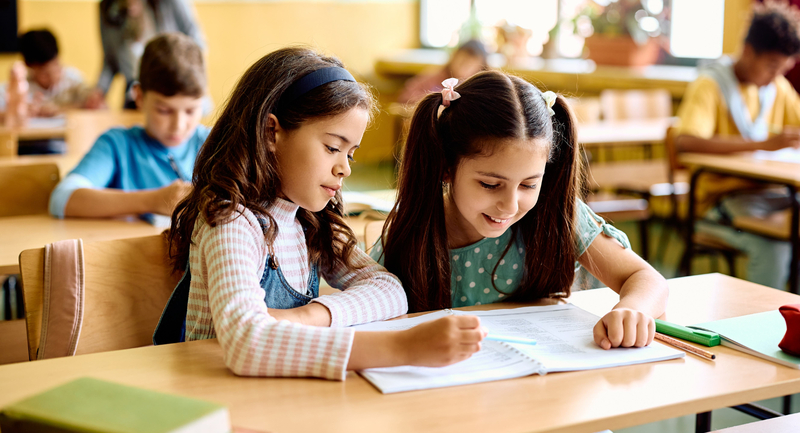Luma Mufleh still remembers the head-pounding work of learning a new language at age 7. What made sense, as one of the few Arab kids born to Syrian refugee parents in an English-speaking school in Jordan, was soccer. Sports, the arts, and music were the few areas in which Mufleh didn’t have to speak, where she could imitate and practice and build the confidence to grow her skills.
Soccer—“a multisensory language,” as Mufleh calls it—became the inspiration for Fugees Family, a group of schools devoted to serving refugee and immigrant students through academics and sports. Founded in 2006 in Atlanta, Fugees Family has grown into two academies in Atlanta, Georgia and Columbus, Ohio that exclusively serve refugee students from countries like Afghanistan, the Congo, and Syria.
With 84 million refugees worldwide, almost half of whom are children, having schools that hyperfocus on these students’ unique needs is a must, says Mufleh, who received political asylum in the United States in her early 20’s. Her book Learning America: One Woman’s Fight for Educational Justice for Refugee Children (HarperCollins, 2022), shares everything she wishes she had known when the schools began.
As a recognized expert in immigrant and multilingual education, Mufleh’s goal as CEO of Fugees Family is to spread the word about an education approach centered on newcomers and their families—one that doesn’t ask them to conform, but celebrates where they came from and helps them adjust to a new place. The results speak for themselves: 92 percent of Fugees Family students graduate and almost all of them are accepted to college.
“Kids are capable,” says Mufleh. “It’s so easy to focus on the trauma and the violence they have fled but imagine if you’ve had to leave your country and start anew. That makes you incredibly strong and resilient.”
Your work to educate refugee students started with a soccer game. How did your school model evolve into what it is now?
I was driving to a Middle Eastern grocery store in Atlanta to get authentic pita bread and hummus. I missed my turn and pulled into an apartment complex, and outside there were kids playing soccer with rocks set up as goals. That reminded me of the way I grew up playing soccer. The first group of kids I met were from Afghanistan, Liberia, and South Sudan. I was a volunteer soccer coach at the YMCA at the time, so I had soccer balls in my trunk. I grabbed a ball—the kids wanted the ball and I wanted to play. With the universal language of soccer, we played a game. That grew into a regular team, and then multiple teams with some of my adult friends.
After playing, my friends and I would tutor the kids. One kid said, “I have a headache, would you read to me?” The same thing happened the second day. On the third day, I told him, “No, I have a headache.” He said, “Coach, I can’t read.” That broke me. For me, education is your way out. I just couldn’t understand how a kid had been in school for three years and couldn’t read.
So, I cobbled a school together with one teacher and six soccer players in a church basement. Every year, it grew—we got accredited in 2013, opened another school in 2018, and now we’re partnering with Bowling Green Independent School District in Kentucky to implement our model. If we want to scale change, we can’t just open 100 charters or voucher-funded schools. The system and policies in other schools need to change as well.
How do you think public schools could make the transition process smoother for newcomer students and families?
When you learn a sport like soccer, you don’t start playing the game until you know how to dribble the ball. They need a softer landing—a place that understands them, that respects their culture, that explains everything that is new to them.
If you talk to any educator, they’ll say, “I don’t understand why I am teaching 6th grade academic work to someone who doesn’t understand the letters of the alphabet.” And students who are just learning English are not going to recognize the alphabet with one hour of ESL support or two months of immersion. Some teachers might not even know simple facts about their new students’ countries and cultures, and there’s not specific training—it's as though English learners are all one monolith. But it’s a huge spectrum, and there’s so much to learn.
What, essentially, is your model? How are you educating students differently?
We do a turbo-charged, year-round, two- to three-year approach to get kids up to grade level. We’ve had success getting kids who are pre-K literate up to 8th grade in three years. We usually take middle and high school students around the ages of 11 to 15. It’s intensive language and repetition with an immersion model of English. We schedule double blocks of English and math for kids who are 12 and 13 to build those foundations. We integrate the arts and athletics because they are a multisensory language of expression.
We also focus on teaching kids to feel comfortable and proud of who they are, so they don’t try to assimilate or feel ashamed of their culture. We have some staff with refugee and immigrant backgrounds, and kids are surrounded by other kids who have had a similar experience and are a couple of years ahead of them. This helps students see the hope at the end of the tunnel.
You write that your schools “are built for and by refugees and immigrants.” How do you involve students’ families and caregivers?
A lot of it is word of mouth. When we first start up in a community, we do events and potlucks and soccer games—things that bring people together. Bowling Green just did their first event for parents and they had food from South America, Eastern Africa, and Afghanistan and all these groups mixed for the first time. Impromptu soccer games happened. For a lot of us who come from Eastern communities, community is our biggest value and time is our biggest gift. It's building relationships and trust.
When we started getting more kids wanting to apply than we had spots, we created an admissions process based on soccer. We have a three-day tryout and look for the kids who show up every day and don’t quit. They’re pushing themselves to the limit because we’re asking them to do that in the classroom, to do two to three years of academic gain in a year. And after that, we take the lowest-performing kids—the kids who need it the most. As our students are in our program longer, they end up being coaches and mentors to younger students. We don’t want our community to always be receiving when we have so much to give. Think about avenues schools can use to allow parents and students to share.
For a lot of us who come from Eastern communities, community is our biggest value and time is our biggest gift.
Luma Musleh
What advice would you give teachers or leaders in supporting their own refugee students?
Our model operates with the same funding as the school district that we’re in. Our school in Georgia has been a charter since 2020, and our school in Ohio gets some state funding, but both still need philanthropy. We don’t spend more on our kids than the district does—we just allocate our resources very differently. We’re lean on administration. We have small classes of no more than 16 students. The money we invest is in the people directly working with the kids. I think schools right now have an opportunity to redirect funds to more programs and more innovative ways of doing things, because they have emergency relief funding.
We’ve been looking at developing free resources and open-source PD. We launched a “Video Ask” tool so that teachers can ask questions about refugee kids they’re working with and someone on our team will respond within 24 hours.
When a teacher first comes to your school, what are the basics that you want them to know before they start working with students?
We do an intensive week of orientation for our teachers, like refugee and immigration 101. We simulate the refugee experience by creating experiments where they feel like outsiders, the way our students would feel. They might run a class in a language they don’t understand for 45 minutes and then write about how that feels. We teach a mix of world affairs and education and give background and political dynamics on the different cultures coming in. We model consistent classroom routines, high expectations, communication using apps and translators with parents. We show how to meet kids where they are and just have high expectations.
In your new book, you write, “For some of us, embracing who we are is an act of rebellion we have to practice over and over.” How do you encourage your students to embrace who they are?
A lot of it is in the cultural celebrations. Or our staff learning how to pronounce students’ names properly—not Americanizing it, not shortening it, but what their mom calls them. When we bring families in for parent-teacher conferences, it’s a whole day to accommodate work schedules. There’s music playing, there’s food from all over, there’s babysitting available—it’s celebratory. In art or music projects, kids can choose to highlight their culture. We have potlucks every month. We celebrate all holidays. Kids learn to talk about their dual identities and what that means, in a place where everybody feels that. Our schools put you in a space where you don’t have to explain yourself every day. It’s on us to train our staff to understand them.
Editor’s note: This interview has been edited for space.
More on Supporting Newcomers
Transition shock contributes to a sense of diminished power among newcomers. Louise El Yaafouri's book describes how educators can restore that power, beginning today.
